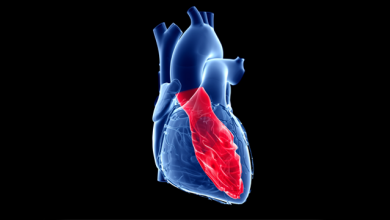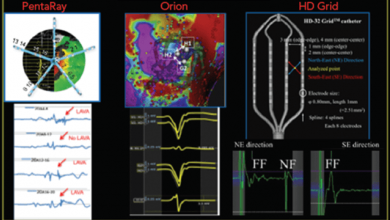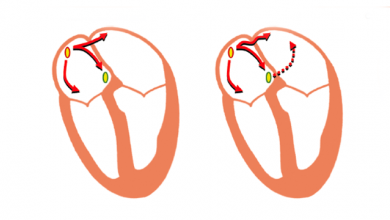Search results
Defining LBBB Patterns in CRT
Author(s):
Roderick Tung
,
Gaurav A Upadhyay
Added:
3 years ago
Article
Author(s):
Ramanan Kumareswaran
,
Francis E Marchlinski
Added:
3 years ago
Ventricular tachycardia (VT) is one of the most challenging medical conditions faced by cardiac patients and physicians treating them. Antiarrhythmic medications have limited effectiveness and are frequently poorly tolerated.1–4 Catheter ablation is increasingly used to treat patients successfully.1,5–7 Most VTs can be ablated endocardially but some require epicardial mapping and ablation…
View more
Author(s):
George Thomas
,
Jiwon Kim
,
Bruce B Lerman
Added:
3 years ago
CRT is an essential treatment for patients with heart failure and reduced ejection fraction as it can restore left ventricular (LV) electrical and mechanical synchrony. It has been shown to increase quality of life, improve functional status, reduce hospitalisation, improve LV systolic function and reduce mortality in properly selected patients.1,2 While CRT is an effective therapy, approximately…
View more
Author(s):
Luuk Heckman
,
Justin Luermans
,
Floor Salden
,
et al
Added:
2 years ago
Electrical Mapping to Optimise Heart Failure Outcomes Following Cardiac Resynchronisation Therapy
Author(s):
David O’Donnell
Added:
8 years ago
Article
Author(s):
Mario Njeim
,
Frank Bogun
Added:
3 years ago
Percutaneous ablation for ventricular tachycardia (VT) was first attempted in 1983 and has rapidly evolved to become an important option for controlling recurrent VTs.1 Endocardial ablation remained the only percutaneous approach until epicardial access was introduced by Sosa et al. in 1996 and thereafter became progressively more available as an adjunctive strategy for the treatment of…
View more
Author(s):
Benjamin Berte
,
Katja Zeppenfeld
,
Roderick Tung
Added:
3 years ago
Accurate substrate characterisation is important for depicting scar-related re-entrant tachycardia to optimise ablation targets and strategies. The underlying substrate can be analysed using electrogram (EGM) characteristics, such as low voltage, local abnormal voltage activity (LAVA), evoked potentials or late potentials, conduction analysis in sinus rhythm or differential pacing, or using…
View more
Value of Sinus Rhythm Mapping
Author(s):
Mathijs S van Schie
,
Natasja MS de Groot
Added:
1 year ago
Article
Author(s):
Geoffrey F Lewis
,
Michael R Gold
Added:
3 years ago
Since the introduction of CRT more than 20 years ago, its role in mild to severe systolic heart failure has become well established. CRT has been shown to decrease mortality, reduce heart failure hospitalisations and improve functional status in patients with NYHA class II–IV heart failure and QRS prolongation, most commonly with LBBB pattern.1 One of the major limitations of CRT implementation…
View more
Author(s):
Demosthenes G Katritsis
,
Hugh Calkins
Added:
6 months ago















